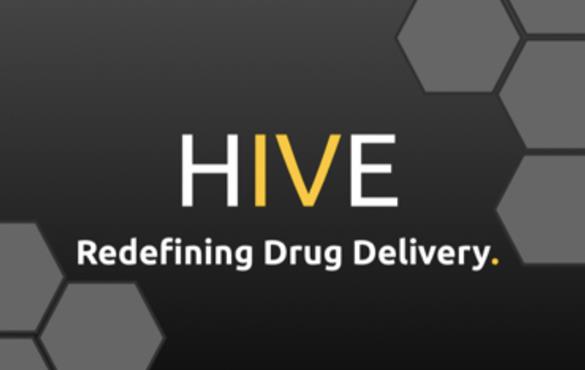HIVE team seeks to help with patient compliance with home treatment
The winners of the 2019 Discovery Competition address outpatient infection treatment monitoring to avoid rehospitalization

Engineers are known for finding solutions to problems. When Yasir Hamad, MD, assistant professor of internal medicine at Washington University School of Medicine, was experiencing a problem tracking patient compliance with at-home drug therapy, he talked to Joe Beggs, an undergraduate student majoring in biomedical engineering, and asked for help at Sling Health's Problem Day.
Beggs (left) assembled a team (from left) comprised of Glen Kleinschmidt, a BS/MS student in biomedical engineering; and Chris Sleckman, a 2019 BS/MS graduate in biomedical engineering; Allie Frank, an occupational therapy student from the School of Medicine; and Sai Dodda, a student at the St. Louis College of Pharmacy. Together, they developed a solution that could help patients get optimal treatment for blood-borne bacterial infection as well as preventing readmission to hospitals, saving the health-care system money.

The team, HIVE, recently took first place in the 2019 Discovery Competition, which brings with it $20,000 in cash, $5,000 in in-kind legal services from St. Louis law firm Polsinelli, and $5,000 in in-kind services from Custom Technologies, a St. Louis-based mold and machine shop. In addition, they received six months of complimentary workspace form TechArtista, a collaborative workspace in the Central West End founded by McKelvey Engineering alumnus Chris Holt.
HIVE is developing a device that would help track usage of outpatient parenteral antimicrobial therapy (OPAT), a treatment patients use at home through a peripherally inserted central catheter (PICC) line to treat blood infections. Currently, home-health services track a patient's compliance with using the medication through patient self-reporting via follow-up phone calls, Dodda said, but that is not always reliable.
"Patients may miss a dose or take less of a dose one day," Dodda said. "When they go to the doctor, the lab results may be off, so the physician may change the dosage of the medication. But the lab results may be off because the patient didn't use the drug properly, not because the infection is getting worse. And that could lead to toxicity from the drugs."
No improvement or even worsening of the infection may lead to costly hospital readmission, which is high among these patients, Beggs said. Under the Affordable Care Act, hospitals may be penalized for readmissions of patients within 30 days of discharge.
HIVE's device, currently made on a 3-D printer, would attach to the PICC line. When the patient begins to use the medication, the device would send a wireless signal to home health care providers that provides data on the patient's use of the therapy.
"We are looking to gather personalized data that does not currently exist," Beggs said. "This will allow the health-care providers to identify the patients who aren't taking their medication when they are supposed to or who are most likely to get sick or need hospital readmission because they are not using their medication correctly.
Several of the team members will be further developing the patent-pending prototype this summer before testing it. They are working to keep the device very inexpensive — under $30 — They plan to develop an accompanying smartphone app for patients who use the therapy. Eventually, they will test their device with patients.
"We are actually looking at human behavior in real time and understanding the behavior of the patient," Beggs said. "And this gives us the ability to do more analytics, understand more about these patients, and create a database that no one else has."



